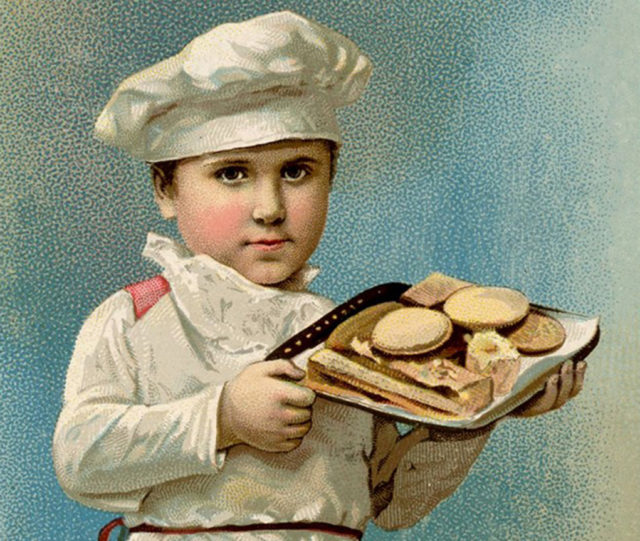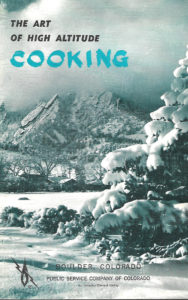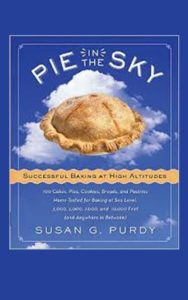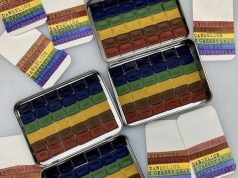
It’s not just you. For once, it really is the altitude.
Food fries weirdly here, cookies spread out like pancakes, pies explode and some cakes collapse. Water boils at a lower temperature so it takes longer to cook vegetables, and coffee and tea don’t taste the same. “A three-minute egg is actually a five- or six-minute egg in Boulder,” according to The Art of High Altitude Cooking, a wonderful booklet distributed by Public Service in the late 1960s.
It gets more complicated. The altitude-adjusted cake recipes that work in Boulder (5,430 feet) need to be re-adjusted for the hardy pioneers baking in Nederland (8,228 feet) and Gold Hill (8,300 feet).
 The Art of High Altitude Cooking announced that “Cooking in Boulder is Fun!” but immediately added a bad news punchline: “If you recently moved to Boulder and found that your favorite cake recipes bear no resemblance to those baked ‘back home,’ you are a victim of high altitude.”
The Art of High Altitude Cooking announced that “Cooking in Boulder is Fun!” but immediately added a bad news punchline: “If you recently moved to Boulder and found that your favorite cake recipes bear no resemblance to those baked ‘back home,’ you are a victim of high altitude.”
A lot has changed since the 1960s, but not the problem: atmospheric pressure. High altitude makes some items harder to cook but not others. You can’t blame the elevation because your roast chicken didn’t turn out well.
Another complicating factor is Colorado’s low humidity. Here we seal our flour in bags to keep the moisture in, not out like cooks in much of the U.S. If your flour gets too dry it won’t measure properly and will weigh less. That is one reason why professional bakers weigh everything instead of using tablespoons and cups. Many put a pan of water in the oven when they bake bread.
The bible for elevated bakers is Susan W. Purdy’s 2005 volume Pie in the Sky Successful Baking at High Altitudes (W. Morrow) based on testing her recipes for cakes, cookies, breads and pastries from sea level to 5,000 and 7,000 feet in Colorado. She has detailed graphs about adjusting the sugar and flour, the position of the rack and the temperature of the oven.
I asked Purdy if there was anything new in elevated baking. “The basic high altitude information has not changed over the years, but the fact is that each recipe is different and there is not a one-size-fits-all solution. We talk about ‘altituding’ a recipe, meaning altering a sea level recipe to fit one’s elevation and many elements will need adjustment,” she says.
The good news is that baking in Colorado is made for scientifically oriented folks who are detail- and process-oriented. The ’60s pamphlet says it well: “You’ll probably find that you will have to experiment with individual recipes.”
The bottom line is that you have to tweak a recipe over time to get it right, including the major result of December baking, cookies. “In general, for cookies we add a little more flour, reduce leavening a tiny bit and add a touch more salt,” Purdy says. “Also, cookies may need slightly longer baking times the higher the altitude.”
The Colorado State University Extension Service also dishes the same fundamental cookie truths in a high altitude brochure and the classic Colorado High Altitude Cookbook by Pat Kendall.
CSU’s formula for fighting cookie “sprawl” suggests “a slight increase in baking temperature, a slight decrease in baking powder or baking soda, a slight decrease in fat and/or sugar, and/or a slight increase in liquid ingredients and flour.”
The Art of High Altitude Cooking offers one more tip for those of us with 20-year-old cookie sheets: “Use only shiny aluminum cookie sheets. Dark or blackened sheets cause cookies to burn on the bottom.” That said, I’m glad there are now nonstick pans you don’t have to scrub with steel wool.
Me? I don’t bake cakes. I am math-impaired but I love to experiment. I avoid the adjustment issue entirely by not using recipes when I bake.
For more high-altitude baking information check the CSU Extension Service resources at colostate.edu and Susan Purdy’s cookbook site: highaltitudebaking.com
Local Food News
Don’t miss the Boulder County Farmers Market’s 10th annual Winter Market, Dec. 3-4 at the Boulder County Fairgrounds. The indoor gathering includes more than 70 local vendors of fresh produce, prepared food, gifts, arts and home goods. It’s your last best opportunity of the year to see your market friends and support Boulder County farming families. … Flagstaff House Restaurant Chef Chris Royster recently won his competition on the Food Network’s Chopped program. Among his dishes were roast pork and maple ice cream with rolled-up apple pie, candied bacon caramel and macerated figs. Before arriving at the Flagstaff House, Royster cooked at Red Rocks Amphitheatre, Zucca and The Huckleberry in Louisville. … Longmont’s Haystack Cheese took home two bronze medals for its Haystack Peak and Queso de Mano at the recent World Cheese Championship. … Seeds Library Café hosts a five-course Lessons in Local dinner in the Canyon Art Gallery at the Boulder Public Library. Reservations: 720-201-8372. … Coming soon: Boulder’s acclaimed Ras Kasa’s Ethiopian Restaurant will open in December at 802 S. Public Road in Lafayette. The eatery had relocated to the Rodeway Broker Inn after losing its longtime 30th Street address to Google.
Taste of the Week
I picked up food from The Rib House in Longmont’s Prospect neighborhood for the first time in years. I brought home tender baby back ribs, smoked brisket, sausage and pork, cheesey corn and XXX BBQ sauce, just as good as I remembered them. They were ideal fare while we watched Sunday night’s epic, painful Broncos-Chiefs game. Now there are at least a half dozen reputable barbecue eateries in the Boulder metro area but 15 years ago when the Rib House opened it was a smoked food pioneer.
Words to Chew On
“There is no chiropractic treatment, no yoga exercise, no hour of meditation in a music-throbbing chapel that will leave you emptier of bad thoughts than this homely ceremony of making bread.” — from The Art of Eating by M.F.K. Fisher.
John Lehndorff hosts Radio Nibbles at 8:25 a.m. Thursdays on KGNU (88.5 FM, 1390 FM, streaming at kgnu.org). Read his food blog at: johnlehndorff.wordpress.com.














